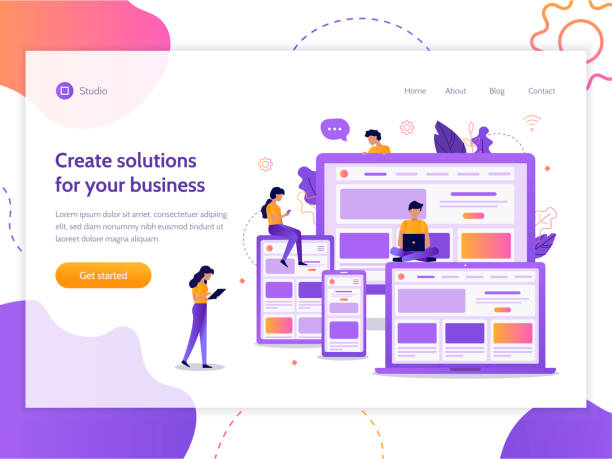Introduction to On-Page SEO and its Vital Importance in Website Optimization

On-Page SEO (On-Page SEO), or in-page optimization, is a set of techniques and actions performed within a website to improve its ranking in search results and attract more organic traffic.
Unlike Off-Page SEO, this process is entirely within your control and includes optimizing various elements such as content, keywords, titles, meta descriptions, URL structure, internal linking, and even technical aspects.
The main goal of #On_Page_SEO is to help search engines better understand your page’s content and determine whether it is relevant and useful for specific keywords that users are searching for.
The importance of On-Page SEO lies in forming the foundation of any successful SEO strategy.
Without strong On-Page SEO, even the best Off-Page SEO strategies cannot lead to desired results.
This method directly affects how search engine bots crawl, index, and rank your pages.
This section provides a comprehensive explanation of why these techniques are important and their impact on website visibility.
Understanding these basic educational principles is the first step towards achieving success in the competitive online world.
We will show you how to increase your website’s visibility and reach your target audience using these principles.
These actions also directly impact user experience; well-optimized pages are also more appealing and user-friendly for visitors.
For example, an attractive title and accurate meta descriptions increase the click-through rate (CTR).
Additionally, fast loading speeds and a logical content structure encourage users to spend more time on your site, which is a positive signal for search engines.
Therefore, On-Page SEO is vital not only for search engines but also for users.
This section lays the foundation for our understanding of this complex but fundamental topic.
Tired of missing out on business opportunities due to not having a professional corporate website? Don’t worry anymore! With Rasaweb’s corporate website design services:
✅ Your brand’s credibility and professionalism will increase.
✅ You will attract more customers and sales leads.
⚡ Get a free consultation now to start!
Smart Keyword Research and Selection for On-Page Optimization

Keyword research is the backbone of any successful SEO strategy, especially in the realm of on-page optimization.
In this specialized phase, you need to identify the words and phrases your target audience is searching for on search engines.
This process is not just about finding high-volume keywords, but about finding keywords that match user intent.
In other words, you need to know exactly what a user wants to find when searching a particular phrase: information, a purchase, a comparison, or something else? This section provides a comprehensive guide to using keyword research tools such as Google Keyword Planner, Ahrefs, Semrush, and Moz Keyword Explorer.
You should identify both head keywords and long-tail keywords.
Long-tail keywords, although having lower search volume, are much more targeted and lead to higher conversion rates.
After identifying relevant keywords, you should incorporate them into your content naturally and without overdoing it (keyword stuffing).
Remember that keyword density alone is no longer the main ranking factor; rather, the quality and relevance of the content to the keywords are more important.
For effective on-page optimization, keywords should be used in the title tag, meta description, headings (H1, H2, H3), main text, and even image file names.
This strategy not only helps search engines better understand the topic of your page but also improves user experience, as the content is exactly what the user was looking for.
This analytical and planned phase forms the foundation of your success in achieving high rankings in search results.
Without precise keyword research, all your subsequent SEO efforts may be fruitless.
Optimizing Important Page Elements: Titles, Meta Descriptions, and Content Structure
![]()
After selecting keywords, it’s time to implement them into the main elements of the page.
This educational section focuses on optimizing the Title Tag, Meta Description, and heading structure (H1, H2, H3, etc.).
The Title Tag is the most important element of On-Page SEO; this is the title displayed in the browser tab and as the main link in search results.
Your title should contain the main keyword, be attractive and encouraging to click, and have an appropriate length (around 50-60 characters).
A good title is appealing to both search engines and users.
The Meta Description is a short summary of the page’s content displayed below the title in search results.
Although it doesn’t directly affect ranking, it significantly impacts the click-through rate (CTR).
It should contain main keywords and be compelling, with a maximum length of 150-160 characters.
Content structure using headings (H1, H2, H3, etc.) helps search engines and users understand the hierarchy and main topics of your content.
H1 should include the main keyword and be used only once per page.
H2 and H3 are used to divide content into sub-sections and incorporate related keywords.
A clear and logical structure increases readability and improves user experience, which is itself a positive signal for ranking.
An explanation of how to write attractive and effective titles and meta descriptions is provided to increase the click-through rate (CTR) of your pages in search results.
These actions are a vital part of website internal optimization and directly affect visibility and audience attraction.
| Element | Description | SEO Importance | Optimization Tips |
|---|---|---|---|
| Title Tag | The title displayed in the browser tab and search results. | Very High (Direct Ranking Factor) | Includes main keyword, attractive and compelling, 50-60 characters long. |
| Meta Description | A short summary of the content displayed below the title in search results. | Medium (Impacts CTR) | Includes keywords, compelling, maximum 150-160 characters. |
| Headings (H1-H6) | Internal headings for content structuring. | High (Increases readability and topic understanding) | H1 only once, includes main keyword; H2-H6 for sub-topics. |
The Role of URL and Site Structure in On-Page Optimization: Efficiency and Accessibility
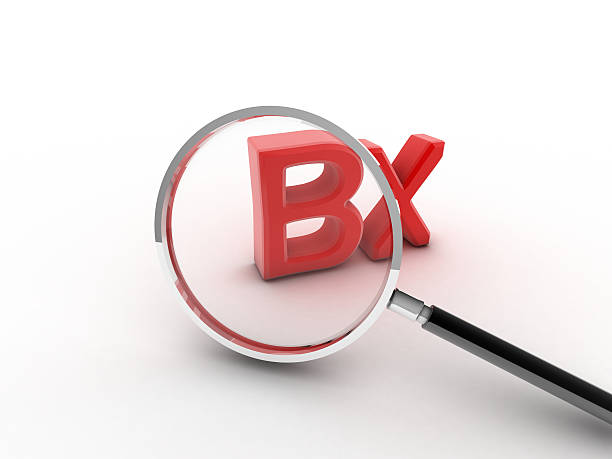
The URL (Uniform Resource Locator) structure and overall site architecture play a crucial role in the success of On-Page SEO.
An optimized URL should be short, descriptive, and contain the page’s main keyword.
Avoiding irrelevant characters, meaningless numbers, and dynamic parameters that lengthen the URL are essential.
Clean and meaningful URLs are not only easier for users to understand but also help search engines better grasp the page’s topic.
For example, yourdomain.com/seo-dakheli-rahnama is much better than yourdomain.com/page?id=123&cat=45.
This section provides guidance on structuring URLs and creating a logical hierarchy for site content.
In addition to URLs, the overall site architecture is also vital.
A logical and hierarchical site structure helps search engine bots easily crawl your site and discover and index your pages.
This includes clear categories, subcategories, and individual pages that are logically interconnected.
Using breadcrumbs can also significantly aid user navigation and search engine understanding of the site structure.
Internal optimization extends beyond content and includes technical aspects that directly impact user experience and crawlability.
A well-structured site distributes link equity more effectively across pages, which in turn helps improve the overall site ranking.
Ensure that every page on your site is accessible from at least one internal link.
This explanatory and guiding process will help you build a strong technical foundation for your SEO strategy.
Did you know that 94% of a first impression of a company is related to its website design?
Rasaweb, by offering professional corporate website design services, helps you create the best first impression.
✅ Create a professional and trustworthy image for your brand
✅ Easier attraction of potential customers and improvement of online presence
⚡ Get a free corporate website design consultation
Improving User Experience and Site Speed from an On-Page SEO Perspective: The Critical Importance of Core Web Vitals

In recent years, search engines, especially Google, have placed increasing emphasis on User Experience (User Experience – UX).
This analytical section examines how UX impacts On-Page SEO and emphasizes the importance of site speed, mobile responsiveness, and Core Web Vitals metrics.
Core Web Vitals (including LCP, FID, and CLS) are a set of metrics related to page loading speed, responsiveness, and visual stability that Google considers as ranking factors.
Site loading speed is not only important for ranking but also directly affects bounce rate and user satisfaction.
Today’s users expect pages to load quickly and will leave the site otherwise.
For website internal optimization in terms of speed, actions such as image compression, browser caching, reducing the number of HTTP requests, optimizing CSS and JavaScript code, and using a CDN (Content Delivery Network) are crucial.
Also, ensuring the site’s mobile-responsiveness for various devices, especially mobile, is essential, as a significant portion of searches are conducted via mobile.
A responsive website design provides a seamless user experience across all devices.
These specialized actions not only help improve your ranking but also directly impact the conversion of visitors into customers.
Google constantly updates its algorithms to reward sites that offer the best user experience.
Therefore, focusing on UX and Core Web Vitals is a smart strategy for long-term SEO.
The Importance of Internal and External Linking in On-Page SEO Strategy: The Power of Connection
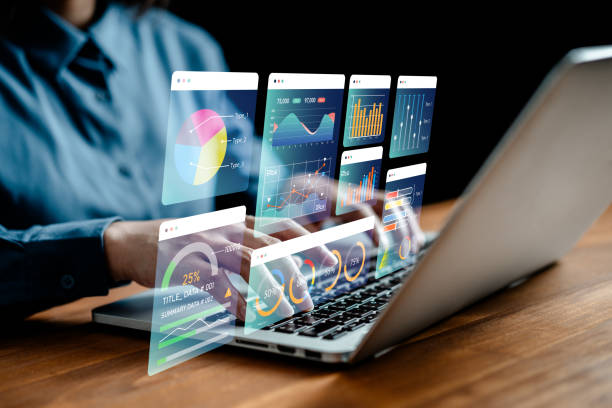
Linking, both internal and external, is an integral part of a strong On-Page SEO strategy.
Internal linking means creating links between different pages within a website.
These types of links have several key benefits: first, they help search engines understand your site’s structure and discover new pages; second, “link equity” is distributed across the site, helping your more important pages achieve higher rankings; and third, they improve user experience and encourage users to spend more time on your site.
This section provides guidance on creating an effective internal linking network, emphasizing the use of relevant and natural anchor texts.
In addition to internal linking, external links can also be beneficial for website internal optimization.
Linking to credible and relevant external resources shows search engines that your content is well-researched and trustworthy.
This action can add to your site’s credibility and send a positive signal for ranking.
However, you must be careful not to link to low-quality or spammy sites.
This aspect of specialized SEO requires precision and strategy to achieve the best results.
Using smart internal links allows users to easily access relevant information, thereby reducing bounce rate and increasing engagement.
These connections between pages show search engines that your site is a comprehensive and authoritative reference in its field of activity, which is itself a powerful factor in improving your website’s ranking and increasing its visibility.
The Role of Images and Videos in On-Page SEO: Increasing Appeal and Effectiveness
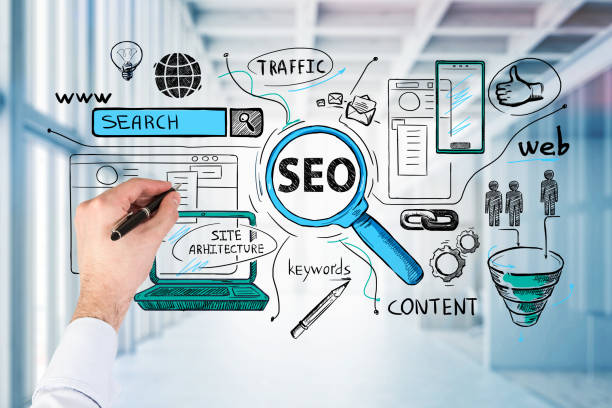
Visual content such as images and videos play a vital role in increasing the appeal and effectiveness of On-Page SEO.
In addition to making your content more engaging for users, they also provide new opportunities for ranking in image and video search results.
In this explanatory and educational section, we will discuss how to optimize images and videos for search engines.
The most important factor in image optimization is the use of Alt Text.
Alt Text is text that describes the content of an image and is used by search engines and for users who cannot view images (e.g., for accessibility reasons).
Alt Text should contain the main or related keyword and accurately describe the image.
Image file names should also be meaningful and contain keywords (e.g., seo-dakheli-strategy.jpg instead of IMG001.jpg).
Image compression is also essential to reduce file size and improve site loading speed, without significantly compromising their quality.
For videos, in addition to uploading to suitable platforms (like YouTube), using descriptions, titles, and tags containing keywords, as well as creating video sitemaps, is recommended.
These specialized actions not only help improve website internal optimization but also provide a better visual experience for users and can increase their interaction with your content.
By following these tips, you can leverage the full potential of visual content to attract more traffic and improve ranking in search engines.
| Optimization Factor | Importance | Description and Solution |
|---|---|---|
| Alt Text | Very High | Describes the image and includes relevant keywords. |
| Image File Name | High | Use keywords (e.g., my-seo-image.jpg). |
| Size and Compression | High (Impacts Site Speed) | Reduce file size without significant quality loss (WebP format). |
| Image Placement | Medium | Images should be placed near relevant text. |
Technical On-Page SEO: Reviewing and Fixing Common Errors for Improved Crawlability

On-Page SEO is not limited to content and keywords; it also includes technical aspects that are vital for the crawlability and indexability of a site by search engines.
This specialized and analytical section examines the most important aspects of technical On-Page SEO.
One such aspect is the Robots.txt file, which tells search engines which parts of your site they can crawl and which they cannot.
Proper use of this file can prevent duplicate or low-value pages from being crawled and indexed.
Another is the XML Sitemap, which provides a list of all important URLs on your site to search engines, helping them discover your pages more quickly and comprehensively.
The XML sitemap should be up-to-date and correctly registered in Google Search Console.
Managing redirects, especially 301 redirects for permanent page transfers, is essential to prevent 404 errors and preserve link equity.
Identifying and fixing 404 errors (page not found) and 5xx errors (server errors) is also crucial for maintaining user experience and site ranking.
This section also covers the use of Canonical Tags to prevent duplicate content issues, which is one of the common challenges in website internal optimization.
By applying these technical settings, you can ensure that search engines see your site in the best possible way and correctly index your valuable content.
These actions are the cornerstone of strong and sustainable SEO.
Do you have an e-commerce site, but your sales aren’t what you expect? Rasaweb solves your problem forever with professional e-commerce website design!
✅ Significant increase in conversion rates and sales
✅ Unparalleled user experience for your customers
⚡ Click to get a free consultation with Rasaweb!
Challenges and Advanced Tips in On-Page SEO: Beyond the Basics

While the basic principles of On-Page SEO have remained constant, the world of SEO is continually changing and evolving.
This informative, analytical, and sometimes entertaining section examines new challenges and advanced tips that go beyond the basics and can help you gain a competitive advantage.
One of the main challenges is engaging content: how can you produce content that not only answers users’ questions but also prompts them to think and interact more? This requires a deep understanding of user intent and the use of analytical data to discover hidden audience needs.
Another advanced tip is optimizing for Voice Search.
With the increasing use of voice assistants, search queries have become longer, more conversational, and more question-based.
To optimize your website internally for voice search, you need to give your content a more natural tone and directly answer frequently asked questions (e.g., by using FAQ sections).
Also, the role of AI in SEO (such as Google’s BERT and MUM algorithms) is increasing, and understanding how these algorithms process natural language is crucial for producing more relevant and conceptual content.
Other advanced tips include using structured data (Schema Markup) to help search engines better understand your content and display it in the form of Rich Snippets.
These visually attractive results can significantly increase the click-through rate.
Ignoring these advanced aspects can be detrimental to your site’s competitiveness, so you should always stay updated on the latest developments and challenges in the SEO world to ensure your website’s internal optimization remains effective.
Conclusion and Practical Solutions for Sustainable Success in On-Page SEO
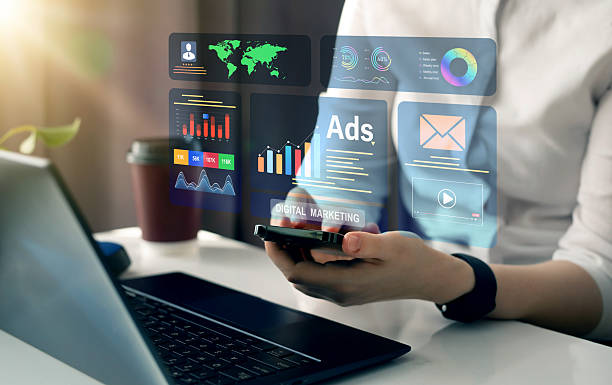
Throughout this article, we comprehensively examined various dimensions of On-Page SEO, covering everything from the importance of keyword research to optimizing page elements, site structure, user experience, site speed, internal and external linking, image optimization, and technical aspects.
This final section, serving as a summary and offering practical solutions, will help you devise an action plan for sustainable success in website internal optimization.
The first step is a comprehensive site audit.
Using tools like Google Search Console and Semrush, assess your site’s current On-Page SEO status and identify strengths and weaknesses.
The second step is to create an prioritized action plan.
Based on the audit results, create a list of tasks to be done and prioritize them based on impact and difficulty.
The third step is continuous implementation and performance monitoring.
SEO is not a one-time process but an ongoing effort.
Regularly update your content, monitor site performance using analytical tools, and react to changes in search engine algorithms.
This analytical section will include practical and actionable recommendations for maintaining and improving your site’s ranking in the long term.
Remember that focusing on quality and providing value to the user is always the best SEO strategy.
By adhering to these principles and consistently and intelligently implementing On-Page SEO techniques, you can significantly increase your site’s organic traffic and achieve your digital marketing goals.
Success in SEO requires patience, persistence, and continuous learning.
Frequently Asked Questions
And other services by Rasaweb Advertising Agency in the field of advertising
Smart Advertising Campaign: Transform user engagement with precise audience targeting.
Smart Social Media: A fast and efficient solution for user engagement focusing on precise audience targeting.
Smart Content Strategy: A dedicated service for growth in customer acquisition based on optimizing key pages.
Smart Custom Software: Transform online growth with the help of key page optimization.
Smart Website Development: An innovative platform for improving sales increase with intelligent data analysis.
And over hundreds of other services in the field of internet advertising, advertising consultation, and organizational solutions
Internet Advertising | Advertising Strategy | Advertorial
Resources
- Guaranteed and Free Zero to Hundred SEO Training 2023
- What is On-Page SEO? Comprehensive Guide to On-Page SEO
- SEO Training from Zero to Hundred
- What is SEO? Complete Website SEO Tutorial
? To elevate your business in the digital world and reach the peak of success, Rasaweb Afarin Digital Marketing Agency is by your side, offering comprehensive and smart services.
Our expertise lies in increasing your visibility, attracting target customers, and sustainable growth of your brand. From professional website design and SEO to social media management and advertising campaigns, everything you need to shine online can be found at Rasaweb Afarin.
With an experienced and dedicated team, transform the future of your business in the online space. Contact us today for a free consultation.
📍 Tehran, Mirdamad Street, next to Bank Markazi, Kazerun Jonubi Alley, Ramin Alley, No. 6

